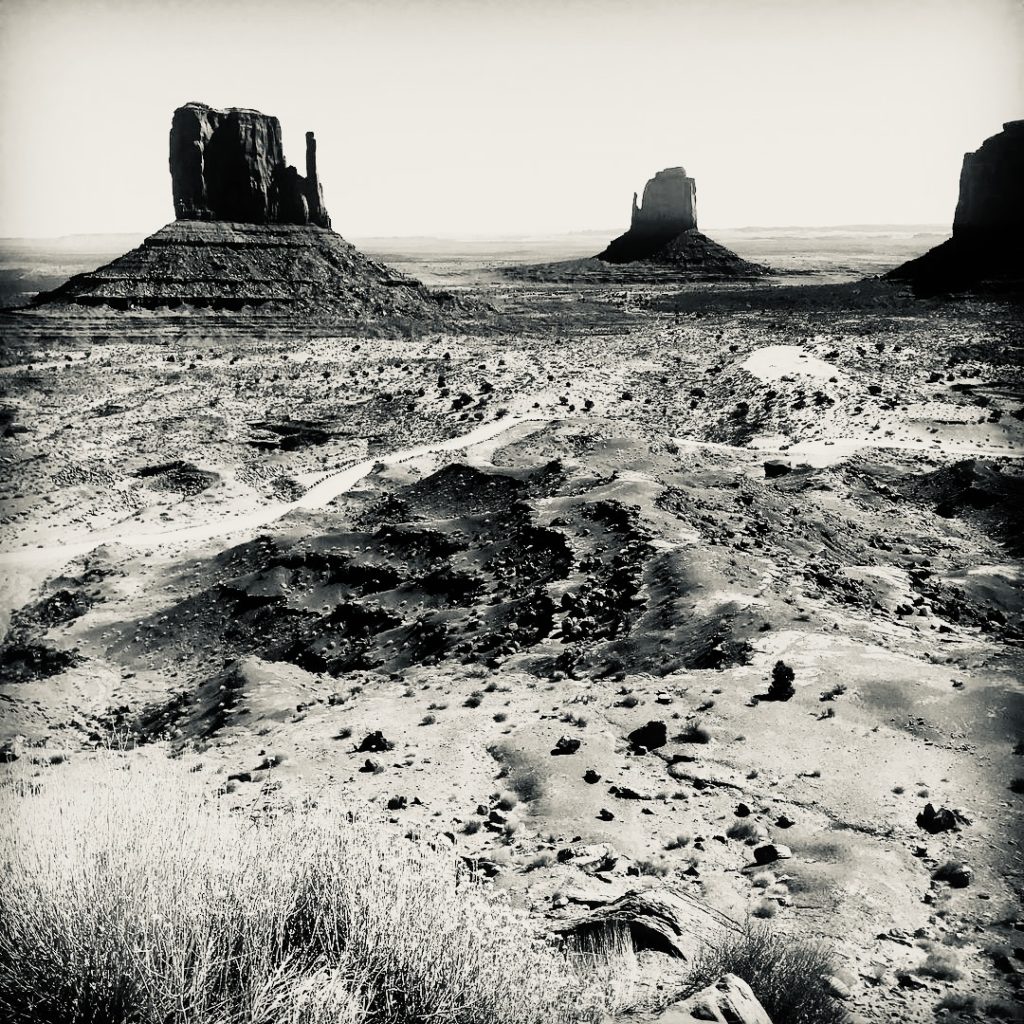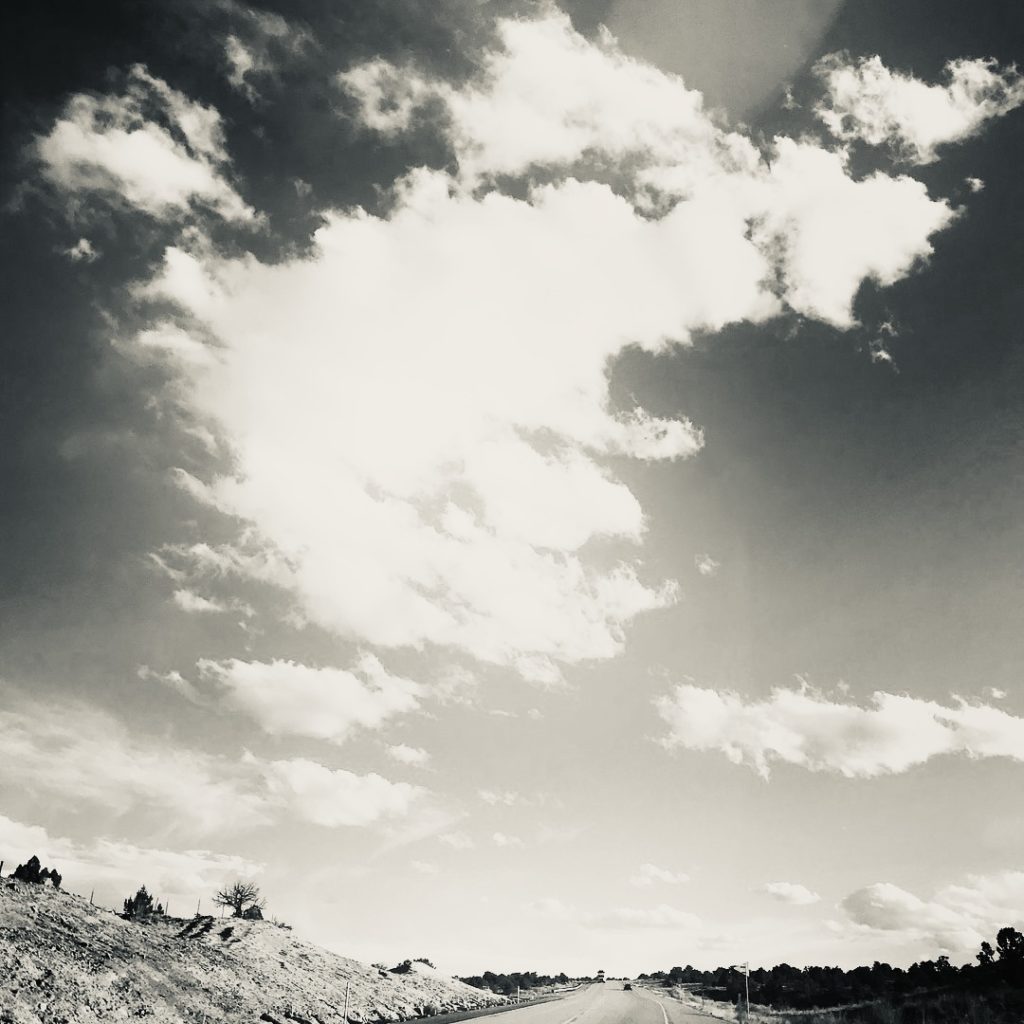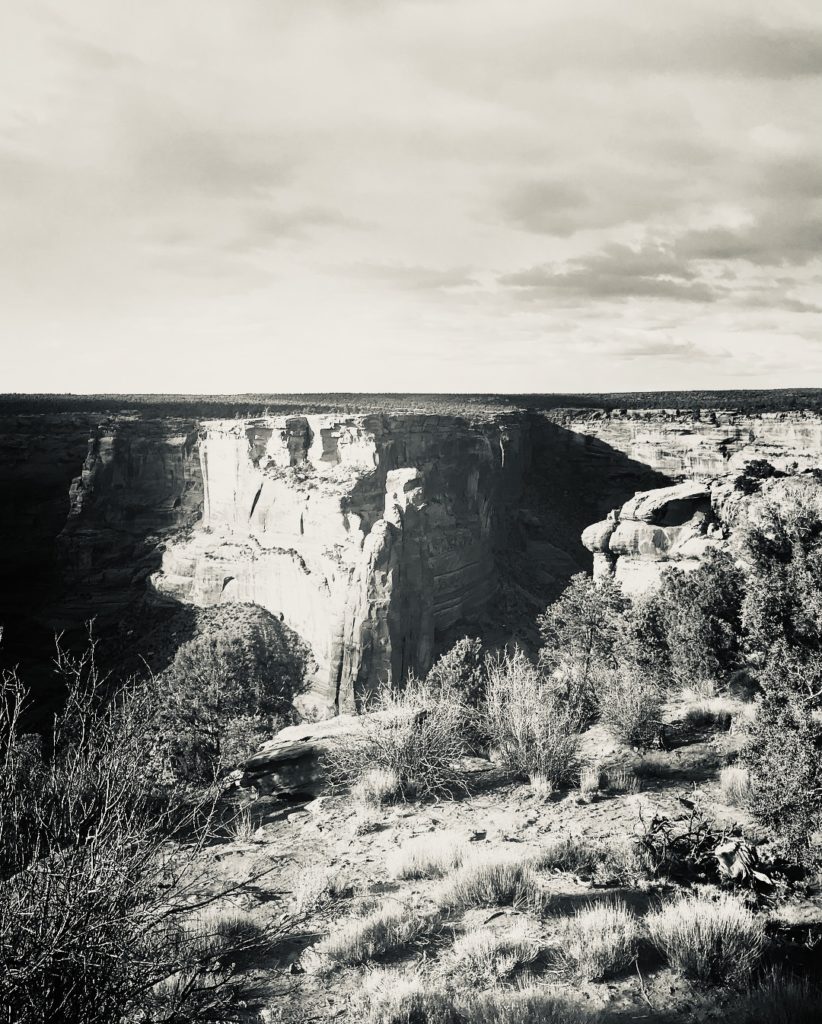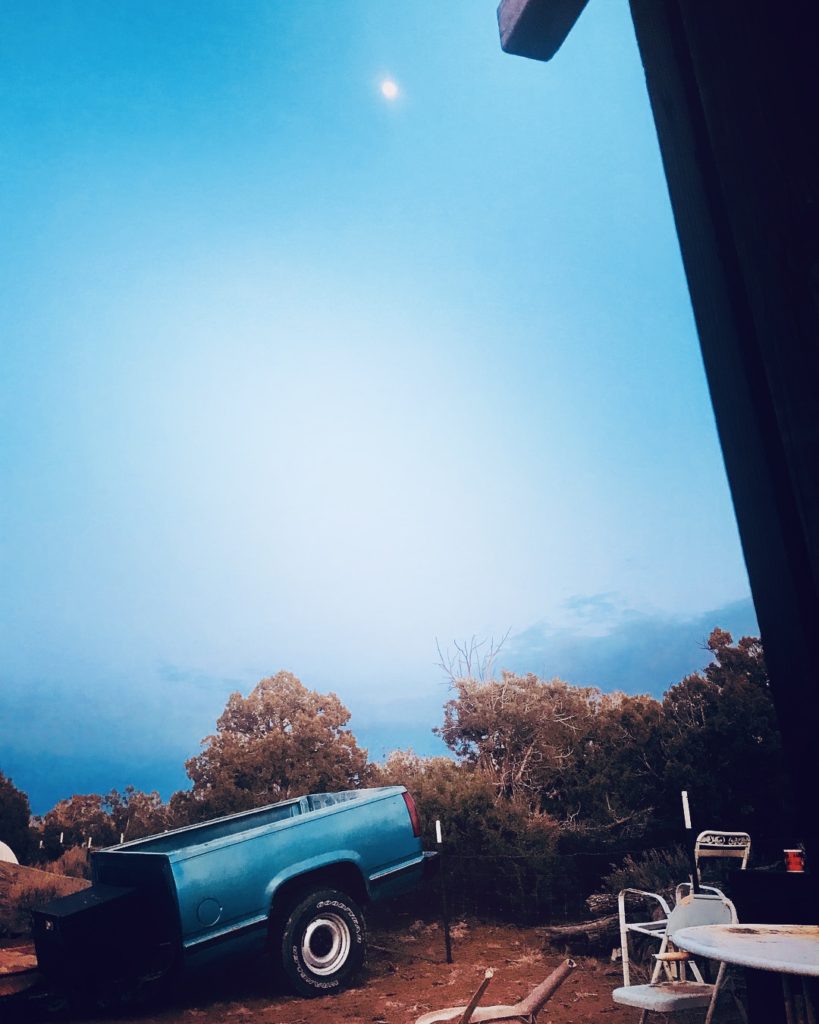by Natalie A. Martínez | Contributing Writer
This essay is part of a series in which Poetry Northwest partners with Seattle Arts & Lectures to present reflections on visiting writers from the SAL Poetry Series. On Friday, November 5, Sherwin Bitsui will read with Kenzie Allen, winner of James Welch Prize, at 7:30 pm PST. This is an online event. In this visual/lyric essay, Natalie A. Martínez considers and collages words from Bitsui’s collections Flood Song and Dissolve.

The sibilant is a tautology that gains its imagine. I drive it, drive it into the middle of. Poem. A. Lake. a Lake. a Lake.
Shifting. Sliding. Soothing songbirds. Spilling. Slicing. Scarring. Sistering. Bitsui, moves the language into a new grammar.
Metaphor muzzles even the quietest of desert footsteps. Underneath is an entire realm of sawtooth poetics that some have mistaken for the dead, and deserted. Or fossilized. Dissolve moves, weaves indigeneity outside of the white-imagination. Between two languages. Navajo (Diné) and English. Into another nowhere that is belted from neon surprise. Substitution that creates, rather than ensures erasure. Or if it does erase, erasure, raises back the aspirant,
Where? What? Simultaneously locatable/unlocatable Nowheres.
For whom is this exiting?Of landscapes?Of Salt?
The photographer poet painter
Pixelates the possibilities of language
Refracts back to us, the reader, its
Asymptotes. Masked. Between the verb & noun.
Here, language unthings. More than an object,
But at the arc of speech’s violence wields its bruised knees.

The metonymic is woven throughout Dissolve. Stand in. Synecdoche. Abalone and Turquoise. Semantic linkage surprising thorn to Red soil. And I follow it. I follow its routes . . .
Into his Ellipses …. Garden. Piles. ….::::…. Omission. Omniscient Buttons of fruit. Seed. The hyphen, or emdash—
a poems’ bone-meal. Where they have bloomed into living word bombs, uranium, toxic, and un-romanticized but ever-present. My relatives from Farmington, Chama, Los Ojos, with their deaths and lives behind them, the road ahead of me. I cut overto the 550. In these pages, as reader, as subject of the desert, I have come tokingdom, the pieces of myself. Starved.
I read a line from Flood Song (in a tent near the Kwelshán”) where glacier water and a river newt finds my wet shoes tucked under pine-needle. I share this poetry huddled in shadow and tent. Texting a pretty woman. The line is for a new love, whose origins, are not only in the desert like mine, but in tundra and arctic; how I am taken there and here, to the possibility of her body, with Bitsui’s terraforming memory—
/shiver on the foam coast of an arctic dream/where whale ribs/clasp and fasten you to a language of shifting ice//(11).
And later, on the page, following the sensual architecture of place & dream, of loss
You stop to wonder what like sounds like/when held under glacier water,/how Ná ho kos feels / under the weight of all that loss.// (11).
I see myself under myself. The cosmos both above and below me. The heavy simile of wonder.
In Dissolve, Origin is first origin then brother then brother nihitsilí tethered between two texts. Riding between the space of no surface, and surface. An earth-boy. A cosmology of caravan. A cosmology of water. Bar. Brother, come back to origin. Car. Full circling. There, again, in Flood Song, they follow us. Page to page. A grief. A word. A thread. A possibility. Into water. Into Dissolve. Pushing artistic practice. Poetic aperture. Sometimes apposition. Sometimes backlit. The light and shadow of every line and image precisely ushered into pattern. Anti-diplosis. Double-back. The homophonic of mo(u)rnings. An assemblage. Towards careful portrait.
The interstices of space on the pages of Dissolve beg the question, if a third shadow grows, who and where are their first and second? Chanderliered in headlight is the split subject of the lens? Silvered and on its knees? Perhaps, where an iris, in not just an iris. But a robe of looking.
—
Natalie A. Martínez (she/they) is a queer Chicanx poet, brujx, Aries, twin, scholar and curator residing in the ancestral homelands of the Coast Salish Peoples. She received her PhD from Arizona State University. Her work has been featured in Nepantla, d3ék’w, Hedreen Gallery & the Seattle Art Museum. She has received scholarships & fellowships to Penn State University, CCCCs, Community of Writers and was most recently a 2021 Lambda Literary Poetry Fellow. Her work is interested in exploring themes around legacies of cultural dispossession, racism, miscegenation, trauma, illness, queerness and the body related to her identities as a multi-racial person with roots in the four-corners region of New Mexico, Europe & North Dakota and Montana (Turtle Mountain Band of Chippewa). Twitter: @coatlicue1978 Instagram: @doctorbasho143
All photos courtesy of Natalie A. Martínez


